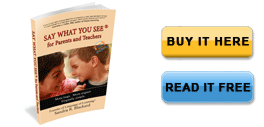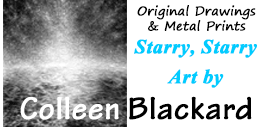Ending Endless Why’s

“Yea, but why?” after you’ve given your best answer to a tough question can be frustrating to hear. What do you say now?
This sneak peek from The Missing Step in Parenting (the new expanded version of the SAY WHAT YOU SEE Handbook) gives you some practical pointers:
Many children pick up the pattern of using questions instead of statements from the adults around them. That’s why our answers to questions like, “Why is that bird sitting on the birdhouse?” “Where did you go?” or “Why would she do that?” sometimes don’t seem good enough to stop the endless stream of why’s that follow.
The best way to tell if a question from a child is really a question is to respond by saying what you see. These three phrases can help you keep the child in the lead: “You’re wondering…,” “You’re thinking about…,” or “You noticed…”
With younger children, “You noticed…,” is often the best place to start as in:
SWYS: “You noticed there was a bird on the birdhouse.”
When a child is trying to tell you something, no answer from you will do. Returning the question also allows children to tell you more. For example, if instead of answering the question, “Where did you go?” you said what you saw, you might hear how the child felt as in:
SWYS: “You’re wondering where I went.”
Child: “Yea. I was scared and didn’t know where you were.”
Or for the question, “Why would she do that?” you might hear the child’s opinion:
SWYS: “You were thinking about why she would do that.”
Child: “I don’t think that was a good idea.”
Given that children must communicate until they are heard, it is no wonder that quick answers often fall short. Taking a moment to clarify their intentions allows you to make sure children feel heard.





